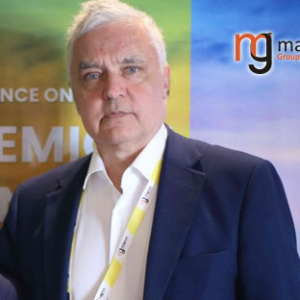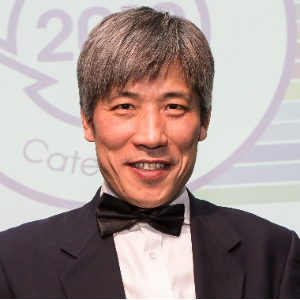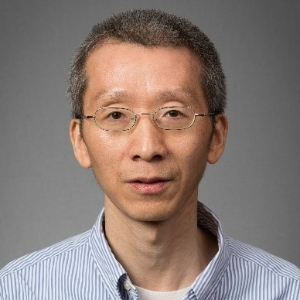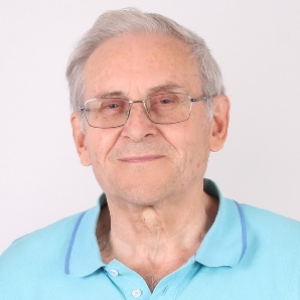Sergey Suchkov, R&D Director of the National Center for Human Photosynthesis, Mexico
A new healthcare-related systems approach resulted in a new trend in the healthcare services, namely, personalized and precision medicine (PPM). In this sense, despite breakthroughs in research, the translation of discoveries into therapies for patients has not kept pace with hea [....] » Read More




















Title : Application of metal single-site zeolite catalysts in heterogeneous catalysis
Stanislaw Dzwigaj, Sorbonne University, France
The metal ions well dispersed at zeolite framework are considered to be active sites of catalytic processes. Therefore, the incorporation of these metals into zeolites as isolated tetrahedral sites appears to be the important task. We have earlier shown that the incorporation of [....] » Read More
Title : One-pot multicomponent syntheses of functional chromophores – Synthetic efficiency meets functionality design
Thomas J J Muller, Heinrich-Heine-Universitat Dusseldorf, Germany
One-pot processes have considerably enhanced diversity-oriented syntheses in the past decades and have become an enabling tool for providing myriads of substance libraries, in particular, in pharmaceutical high-throughput screening and lead finding. Over the past two decades, we [....] » Read More
Title : The roles and capacity building of NGOs as agents responding to climate change
Dai Yeun Jeong, Jeju National University, Korea, Republic of
Climate change is one of the most serious environmental problems impacting on nature and humans at a global level. The major agents responding to climate change are government, enterprise, NGO, citizen, and UNFCCC (United Nations Framework Convention on Climate Change). Each agen [....] » Read More
Title : Global cooling is not a cost but the best economic investment of the world's people
Luigi Antonio Pezone, Santa Maria Capua Vetere, Italy
Energy development has produced global warming of the planet because the energies produced by humans nuclear, fossil, renewable are not integrated with the natural energy system of the earth, which does not like thermal energy, nor the transport of electrical energy in the terres [....] » Read More
Title : The multidimensional topological shift of the KRASG12D proteins in catalytic environments and pertinent drugs-targetting
Orchidea Maria Lecian, Sapienza University of Rome, Italy
The properties of the KRASG12D proteins are analyzed; the behaviour in catalytic environment is recalled. The proposed Markov Models are reviewed after [F. Liang, Z. Kang, X. Sun, J. Chen, X. Duan, H. He, J. Cheng, Inhibition mechanism of MRTX1133 on KRASG12D: a molecular dynamic [....] » Read More
Title : Eco-friendly synthesized SnO2@Cu(O,S) nanocomposite catalysts for (Photo-) catalytic removal of selected chemical pollutants
Misganaw Alemu Zeleke, University of Limerick, Ireland
The application of green technology in synthesizing single-phase, heterostructure, and composite heterogeneous catalyst nanomaterials addresses critical environmental challenges while improving synthesis precision, operational efficiency, and cost-effectiveness. In this study, a [....] » Read More
Title : Direct air capture cost reduction and market development via process intensification. Establishing the DAC insetting concept
Albert Pujol, Christen Ostenfeld and Wriborg Jonson, Denmark
Direct Air Capture (DAC) technologies are anticipated to achieve megaton-scale by 2030 and gigaton-scale by 2050. However, current capture costs and pace of development cast doubt on DAC's readiness to contribute to the environmental goals in the 2030s. This study introduces [....] » Read More
Title : Microwave transformation of high-density polyethylene to hydrogen: The role of CoFeAlOx catalyst
Michal Vastyl, Technical University of Ostrava, Czech Republic
High-density polyethylene (HDPE) represents a persistent environmental burden due to its exceptional durability. Catalytic decomposition offers a transformative pathway to valorize this waste into valuable energy products. However, the challenge of selective bond cleavage in poly [....] » Read More
Title : New methods for identifying in vivo biomedical reaction mechanisms
Dae Dong Sung, Korea University Sejong Campus, Korea, Republic of
Recently, biomedicine has made great advances in anti-aging and disease treatment. There are still many difficulties in accurately identifying the process by which the human body ages and the causes of chronic diseases. The field of chemical reaction mechanism tools has mad [....] » Read More
Title : Design and optimization of a thermal air sterilizer prototype for airborne pathogen deactivation: A CFD approach
Amarendra Kumar, Indian Institute Of Technology (IIT) Tirupati, India
Airborne pathogens, such as Mycobacterium tuberculosis and SARS-CoV-2, pose significant health risks due to their ability to remain suspended in air for extended periods. Traditional air sterilization technologies, such as HEPA filters and UV light, exhibit limitations in deactiv [....] » Read More
Title : Studies towards at the synthesis of (+)-Adenophorine
Maria Candeia Kuliakita Sakukuma, Higher Institute of Education Sciences in Lubango/HuIla (ISCED-HUILA), Angola
Iminosugars are frequently synthesized from carbohydrates as chiral pool starting materials with use of an amination–intermolecular cyclization sequence or an intramolecular reductive amination cyclization anas the key step. The asymmetric total synthesis of (+)-adenophorin [....] » Read More
Title : Potential serum biomarkers for early detection of diabetic nephropathy
Tarek K Motawi, Cairo University, Egypt
Aim: Diabetic nephropathy (DN) is considered as one of the diabetic complications affectingup to 40% of patients with type 1 or type 2 diabetes. In clinical practice, the frequentlyused markers of renal disease and progression are serum creatinine, estimated glomerular filtration [....] » Read More